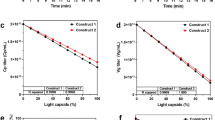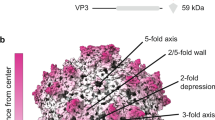Abstract
Recombinant adeno-associated viruses (rAAV) are used extensively as gene delivery vectors in clinical studies, and several rAAV based treatments have already been approved. Significant progress has been made in rAAV manufacturing; however, better and more precise capsid characterization techniques are still needed to guarantee the purity and safety of rAAV preparations. Current analytical techniques used to characterize rAAV preparations are susceptible to background signals, have limited accuracy, or require a large amount of time and material. A recently developed single-molecule technique, mass photometry (MP), measures mass distributions of biomolecules with high-resolution and sensitivity. Here we explore applications of MP for the characterization of capsid fractions. We demonstrate that MP is able to resolve and quantify not only empty and full-genome containing capsid populations but also identify partially packaged capsid impurities. MP data accurately measures full and empty capsid ratios, and can be used to estimate the size of the encapsidated genome. MP distributions provide information on sample heterogeneity and on the presence of aggregates. Sub-picomole quantities of sample are sufficient for MP analysis, and data can be obtained and analyzed within minutes. This method provides a simple, robust, and effective tool to monitor the physical attributes of rAAV vectors.
This is a preview of subscription content, access via your institution
Access options
Subscribe to this journal
Receive 12 print issues and online access
$259.00 per year
only $21.58 per issue
Buy this article
- Purchase on Springer Link
- Instant access to full article PDF
Prices may be subject to local taxes which are calculated during checkout






Similar content being viewed by others
References
Kotin RM, Siniscalco M, Samulski RJ, Zhu XD, Hunter L, Laughlin CA, et al. Site-specific integration by adeno-associated virus. Proc Natl Acad Sci U S A. 1990;87:2211–5.
Surosky RT, Urabe M, Godwin SG, McQuiston SA, Kurtzman GJ, Ozawa K, et al. Adeno-associated virus Rep proteins target DNA sequences to a unique locus in the human genome. J Virol. 1997;71:7951–9.
Mendell JR, Al-Zaidy SA, Rodino-Klapac LR, Goodspeed K, Gray SJ, Kay CN, et al. Current clinical applications of in vivo gene therapy with AAVs. Mol Ther. 2021;29:464–88.
Bastola P, Song L, Gilger BC, Hirsch ML. Adeno-associated virus mediated gene therapy for corneal diseases. Pharmaceutics 2020;12:767.
Fu YW, Dai XY, Wang WT, Yang ZX, Zhao JJ, Zhang JP, et al. Dynamics and competition of CRISPR-Cas9 ribonucleoproteins and AAV donor-mediated NHEJ, MMEJ and HDR editing. Nucleic Acids Res. 2021;49:969–85.
Hana S, Peterson M, McLaughlin H, Marshall E, Fabian AJ, McKissick O, et al. Highly efficient neuronal gene knockout in vivo by CRISPR-Cas9 via neonatal intracerebroventricular injection of AAV in mice. Gene Ther 2021;28:646–58. https://doi.org/10.1038/s41434-021-00224-2.
Sonntag F, Schmidt K, Kleinschmidt JA. A viral assembly factor promotes AAV2 capsid formation in the nucleolus. Proc Natl Acad Sci U S A. 2010;107:10220–5.
Srivastava A, Lusby EW, Berns KI. Nucleotide sequence and organization of the adeno-associated virus 2 genome. J Virol. 1983;45:555–64.
Trempe JP, Carter BJ. Alternate mRNA splicing is required for synthesis of adeno-associated virus VP1 capsid protein. J Virol. 1988;62:3356–63.
Xie Q, Bu W, Bhatia S, Hare J, Somasundaram T, Azzi A. et al. The atomic structure of adeno-associated virus (AAV-2), a vector for human gene therapy. Proc Natl Acad Sci U S A. 2002;99:10405–10.
de la Maza LM, Carter BJ. Molecular structure of adeno-associated virus variant DNA. J Biol Chem. 1980;255:3194–203.
Lipps BV, Mayor HD. Characterization of heavy particles of adeno-associated virus type 1. J Gen Virol. 1982;58:63–72.
Lock M, Alvira MR, Wilson JM. Analysis of particle content of recombinant adeno-associated virus serotype 8 vectors by ion-exchange chromatography. Hum Gene Ther Methods. 2012;23:56–64.
Gao K, Li M, Zhong L, Su Q, Li J, Li S, et al. Empty virions in AAV8 vector preparations reduce transduction efficiency and may cause total viral particle dose-limiting side-effects. Mol Ther Methods Clin Dev. 2014;1:20139.
Wright JF. AAV empty capsids: for better or for worse? Mol Ther. 2014;22:1–2.
Gimpel AL, Katsidis G, Sha S, Maloney AJ, Hong MS, Nguyen TTN, et al. Analytical methods for process and product characterization of recombinant adeno-associated virus-based gene therapies. Molecular Therapy. 2021;20:740–54.
Dobnik D, Kogovsek P, Jakomin T, Kosir N, Tusek Znidaric M, Leskovec M, et al. Accurate quantification and characterization of adeno-associated viral vectors. Front Microbiol. 2019;10:1570.
Kuck D, Kern A, Kleinschmidt JA. Development of AAV serotype-specific ELISAs using novel monoclonal antibodies. J Virol Methods. 2007;140:17–24.
Sommer JM, Smith PH, Parthasarathy S, Isaacs J, Vijay S, Kieran J, et al. Quantification of adeno-associated virus particles and empty capsids by optical density measurement. Mol Ther. 2003;7:122–8.
McIntosh NL, Berguig GY, Karim OA, Cortesio CL, De Angelis R, Khan AA, et al. Comprehensive characterization and quantification of adeno associated vectors by size exclusion chromatography and multi angle light scattering. Sci Rep. 2021;11:3012.
Subramanian S, Maurer AC, Bator CM, Makhov AM, Conway JF, Turner KB, et al. Filling adeno-associated virus capsids: estimating success by cryo-electron microscopy. Hum Gene Ther. 2019;30:1449–60.
Urabe M, Xin KQ, Obara Y, Nakakura T, Mizukami H, Kume A, et al. Removal of empty capsids from type 1 adeno-associated virus vector stocks by anion-exchange chromatography potentiates transgene expression. Mol Ther. 2006;13:823–8.
Pierson EE, Keifer DZ, Asokan A, Jarrold MF. Resolving adeno-associated viral particle diversity with charge detection mass spectrometry. Anal Chem. 2016;88:6718–25.
Burnham B, Nass S, Kong E, Mattingly M, Woodcock D, Song A, et al. Analytical ultracentrifugation as an approach to characterize recombinant adeno-associated viral vectors. Hum Gene Ther Methods. 2015;26:228–42.
Cole D, Young G, Weigel A, Sebesta A, Kukura P. Label-free single-molecule imaging with numerical-aperture-shaped interferometric scattering microscopy. ACS Photonics. 2017;4:211–6.
Young G, Hundt N, Cole D, Fineberg A, Andrecka J, Tyler A, et al. Quantitative mass imaging of single biological macromolecules. Science. 2018;360:423–7.
Li Y, Struwe WB, Kukura P. Single molecule mass photometry of nucleic acids. Nucleic Acids Res. 2020;48:e97.
Olerinyova A, Sonn-Segev A, Gault J, Eichmann C, Schimpf J, Kopf AH, et al. Mass Photometry of Membrane Proteins Chem. 2021;7:2.
Wu D, Piszczek G. Measuring the affinity of protein-protein interactions on a single-molecule level by mass photometry. Anal Biochem. 2020;592:113575.
Hickman AB, Kailasan S, Genzor P, Haase AD, Dyda F. Casposase structure and the mechanistic link between DNA transposition and spacer acquisition by CRISPR-Cas. Elife 2020;9:e50004.
Garmann RF, Goldfain AM, Manoharan VN. Measurements of the self-assembly kinetics of individual viral capsids around their RNA genome. Proc Natl Acad Sci U S A. 2019;116:22485–90.
Malay AD, Miyazaki N, Biela A, Chakraborti S, Majsterkiewicz K, Stupka I, et al. An ultra-stable gold-coordinated protein cage displaying reversible assembly. Nature. 2019;569:438–42.
Sonn-Segev A, Belacic K, Bodrug T, Young G, VanderLinden RT, Schulman BA, et al. Quantifying the heterogeneity of macromolecular machines by mass photometry. Nat Commun. 2020;11:1772.
Yu W, Mookherjee S, Chaitankar V, Hiriyanna S, Kim JW, Brooks M, et al. Nrl knockdown by AAV-delivered CRISPR/Cas9 prevents retinal degeneration in mice. Nat Commun. 2017;8:14716.
Wu D, Piszczek G. Standard protocol for mass photometry experiments. Eur Biophys J. 2021;50:403–9.
Wu D, Piszczek G. Rapid determination of antibody-antigen affinity by mass photometry. JoVE. 2021. https://doi.org/10.3791/61784.
Schuck P. Sedimentation velocity analytical ultracentrifugation: discrete species and size-distributions of macromolecules and particles, CRC Press: Boca Raton, FL; 2016.
Berkowitz SA, Philo JS. Monitoring the homogeneity of adenovirus preparations (a gene therapy delivery system) using analytical ultracentrifugation. Anal Biochem. 2007;362:16–37.
Mass photometry of AAVs. Refeyn Application Note 2020.
Lock M, McGorray S, Auricchio A, Ayuso E, Beecham EJ, Blouin-Tavel V, et al. Characterization of a recombinant adeno-associated virus type 2 reference standard material. Hum Gene Ther. 2010;21:1273–85.
Fu X, Chen WC, Argento C, Clarner P, Bhatt V, Dickerson R, et al. Analytical strategies for quantification of adeno-associated virus empty capsids to support process development. Hum Gene Ther Methods. 2019;30:144–52.
Wang C, Mulagapati SHR, Chen Z, Du J, Zhao X, Xi G, et al. Developing an anion exchange chromatography assay for determining empty and full capsid contents in AAV6.2. Mol Ther Methods Clin Dev. 2019;15:257–63.
Acknowledgements
This work was supported by the intramural program of the NHLBI, NIH. We thank Suja Hiriyanna (Ocular Gene Therapy Core, NEI, NIH) for generating the virus constructs.
Funding
This work was supported by the Intramural Research Program of the NHLBI, NIH (HL000338).
Author information
Authors and Affiliations
Contributions
DW and GP conceived and planned the experiments and designed and generated the figures; DW performed the experiments and analyzed the data; PH and TL designed and produced the rAAV vectors; and GP wrote the manuscript with input from all authors.
Corresponding author
Ethics declarations
Competing interests
The authors declare no competing interests.
Additional information
Publisher’s note Springer Nature remains neutral with regard to jurisdictional claims in published maps and institutional affiliations.
Supplementary information
Rights and permissions
About this article
Cite this article
Wu, D., Hwang, P., Li, T. et al. Rapid characterization of adeno-associated virus (AAV) gene therapy vectors by mass photometry. Gene Ther 29, 691–697 (2022). https://doi.org/10.1038/s41434-021-00311-4
Received:
Revised:
Accepted:
Published:
Issue Date:
DOI: https://doi.org/10.1038/s41434-021-00311-4
This article is cited by
-
Comparison of three AUC techniques for the determination of the loading status and capsid titer of AAVs
European Biophysics Journal (2023)
-
Mass photometry: A powerful tool for carbohydrates-proteins conjugation monitoring and glycoconjugates molecular mass determination
Glycoconjugate Journal (2023)



